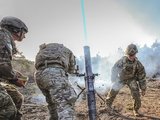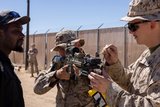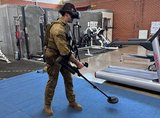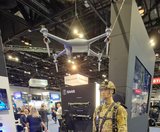Cubic tailors mortar simulator for the US Army
The company’s mortar trainer received improvements based on soldier’s feedback.
Four new Texan T1 trainer aircraft arrived at RAF Valley in December 2020 under the MFTS programme. (Photo: UK MoD/Crown Copyright)
UK MoD procurement body Defence Equipment and Support (DE&S) has awarded incumbent provider Ascent Flight Training an extra £175 million ($239.25 million) contract under the UK Military Flying Training System (MFTS) programme for student pilots.
Basic flying training within MFTS will increase capacity from 36 to 53 students per year from 2024, the MoD noted in a 27 October announcement.
The latest contract includes delivery of four new Texan T6C Texan II aircraft (designated Texan T1 by the RAF) that arrived at RAF Valley in November 2020; a new static flight simulator; nine Texan mission planning systems; and additional infrastructure at RAF Valley.
Cdre Mark Langrill, head of MFTS at DE&S, said: ‘This second significant uplift to the training system follows on from the Rotary Wing training amendment awarded in December 2019. The additional Fixed Wing capacity provided will enable Fast Jet pilots of the future to train in a ‘state of the art’ facility [at RAF Valley] with modern aircraft and synthetic training devices before proceeding to the Hawk Advanced Jet Training pipeline.’
Ascent is a JV between Babcock International and Lockheed Martin, supported by supply chain partner Affinity Flight Training.

The company’s mortar trainer received improvements based on soldier’s feedback.

The company will operate in two new locations in the coming years to better support US services.

This type of tool provides more realistic training easing the incorporation of new scenarios that accurately represent the threats of the battlefield.

The Engineering Corps has been conducting individual instruction using FLAIM Systems’ Sweeper and should start collective deployments in 2025.

The next-generation platform is motion-compatible and can be used in OTW and NVG applications.

The system can be used to prepare soldiers for both drone offensive operations and CUAS missions.